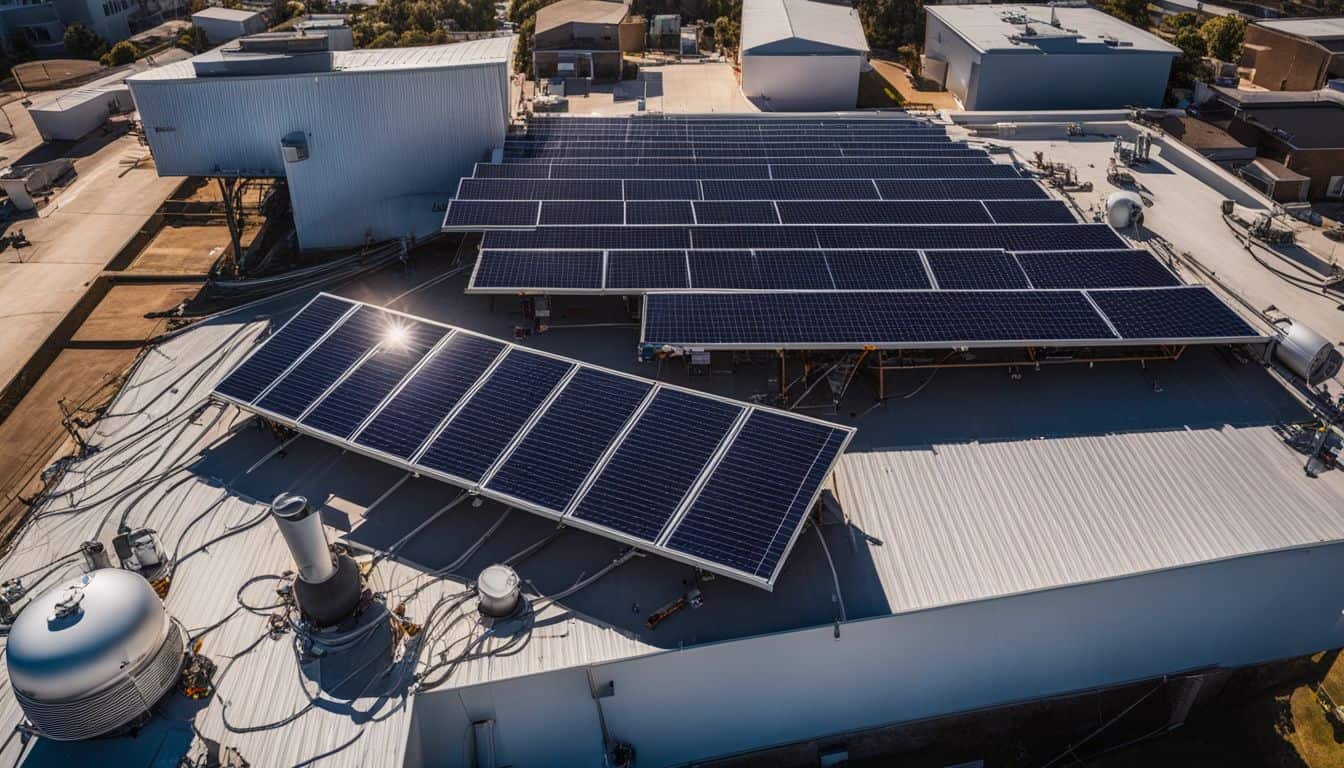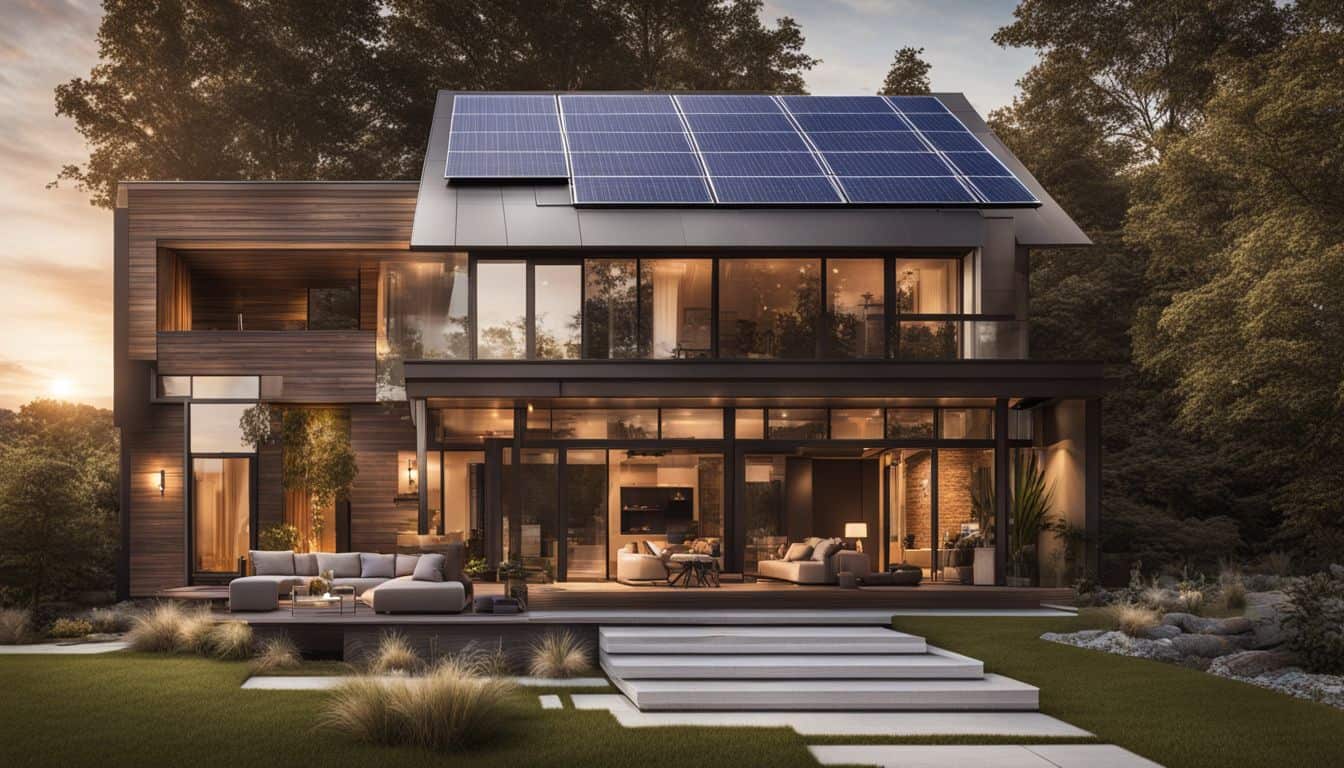As homeowners increasingly seek sustainable and cost-effective energy solutions, integrating solar heating panels with existing home heating systems has emerged as a promising option. This guide will explore the ins and outs of combining solar thermal technology with conventional heating methods, offering insights into the benefits, challenges, and best practices for a successful integration.
Understanding Solar Heating Panels
Before delving into integration methods, it’s crucial to understand the basics of solar heating panels. These systems harness the sun’s energy to heat water or air, which can then be used for space heating or domestic hot water. There are two main types of solar heating panels:
- Flat plate collectors: These consist of an insulated box with a dark absorber plate covered by a transparent cover. They are generally less expensive and can be used in various climates.
- Evacuated tube collectors: These use glass tubes containing absorber plates, offering higher efficiency, especially in colder climates. While more expensive, they can perform better in areas with less direct sunlight.
For a deeper dive into the various types and functionalities of solar heating panels, check out our guide to solar heating panels for the home.
Integration Methods
Integrating solar heating panels with existing home heating systems can be achieved through direct or indirect methods:
Direct Integration
Direct integration involves connecting solar panels directly to the home’s heating system. This can be particularly effective with:
- Radiant floor heating: Solar-heated water can be circulated through the tubing in a radiant floor system, providing efficient and comfortable heat. This method works well in new construction or major renovations where the radiant floor system can be designed with solar integration in mind.
- Forced air systems: Solar-heated air can be ducted directly into the home’s existing forced air system, supplementing the primary heat source. This approach can be more straightforward to implement in homes with existing ductwork.
Indirect Integration
Indirect integration uses solar-heated water to supplement the existing heating system:
- Boiler systems: Solar-heated water can preheat water entering a conventional boiler, reducing the energy required to reach the desired temperature. This method can be particularly effective in homes with hydronic heating systems.
- Heat exchanger systems: A heat exchanger can transfer heat from the solar-heated fluid to the home’s heating system without mixing the fluids. This approach offers flexibility and can be used with various types of existing heating systems.
Key Components for Integration
A successful solar heating integration requires several key components:
- Solar collectors: The panels that capture solar energy. The choice between flat plate and evacuated tube collectors will depend on your climate and specific needs.
- Storage tanks: To store heated water for use when sunlight is unavailable. Proper sizing of the storage tank is crucial for optimal performance.
- Heat exchangers: For transferring heat between solar fluid and the home’s heating system. The type and size of the heat exchanger will depend on the specific integration method chosen.
- Controllers and pumps: To manage the flow of heated fluid and optimize system performance. Advanced controllers can integrate with smart home systems for improved efficiency.
- Backup heating system: To ensure consistent heating during periods of low solar radiation. This is typically the existing conventional heating system.
Design Considerations
Proper design is crucial for maximizing the benefits of an integrated solar heating system. This involves:
- Assessing home heating needs: Understanding your home’s heating requirements throughout the year, including peak demand periods.
- Determining optimal panel placement: Considering factors like roof orientation, shading, and local climate. South-facing roofs with minimal shading are ideal in the Northern Hemisphere.
- Balancing solar input with existing systems: Ensuring seamless integration and operation with conventional heating methods. This may involve adjusting the settings of your existing heating system to prioritize solar heat when available.
- System sizing: Carefully calculating the appropriate size of the solar heating system based on your home’s heating load and available installation space.
For insights into the latest design trends in solar heating panels, explore our article on design trends in solar heating panels.
Advantages of Integrated Solar Heating
Integrating solar heating panels with home heating systems offers numerous benefits:
- Reduced energy costs: By harnessing free solar energy, homeowners can significantly lower their heating bills. The extent of savings will depend on factors such as system size, local climate, and energy prices.
- Lower carbon emissions: Solar heating reduces reliance on fossil fuels, decreasing a home’s carbon footprint. This can be particularly significant in areas where the electricity grid relies heavily on fossil fuels.
- Increased energy independence: Solar heating provides a degree of protection against energy price fluctuations and supply issues. This can be especially valuable in regions with unstable energy prices or unreliable grid power.
- Enhanced home value: A well-designed solar heating system can increase the value of your home, making it more attractive to potential buyers in an increasingly eco-conscious market.
- Improved comfort: Solar heating systems can provide more consistent and evenly distributed heat, enhancing overall comfort in the home.
Challenges and Solutions
While the benefits are substantial, there are challenges to consider:
- Intermittent solar availability: Backup heating systems and proper storage solutions are essential for cloudy days and nighttime use. Hybrid systems that combine solar with other renewable technologies, such as heat pumps, can provide a more consistent energy supply.
- Installation complexities: Professional installation is crucial to ensure proper integration and optimal performance. Choose experienced installers familiar with both solar thermal systems and conventional heating systems.
- Potential overheating: Proper system design and controls can prevent overheating during peak summer months. This may include features like heat dissipation systems or the ability to use excess heat for other purposes, such as pool heating.
- Initial costs: While solar heating systems can provide long-term savings, the upfront investment can be significant. Explore financing options and available incentives to make the initial investment more manageable.

Cost Considerations
The initial investment in a solar heating system can be significant, but long-term savings often justify the cost. Factors to consider include:
- Initial installation costs, including equipment and labor.
- Potential energy savings over the system’s lifetime.
- Available incentives and rebates can substantially reduce upfront costs.
- Maintenance and operational costs over time.
- Potential increase in property value.
It’s important to conduct a thorough cost-benefit analysis, taking into account your specific energy usage patterns and local energy prices.
Maintenance and Longevity
Solar heating systems generally require minimal maintenance, typically limited to annual inspections and occasional cleaning. Regular maintenance tasks may include:
- Checking fluid levels and pressure in the system.
- Inspecting pipes and connections for leaks.
- Cleaning solar collectors to ensure maximum efficiency.
- Checking and replacing antifreeze solution as needed.
With proper care, these systems can last 20-30 years or more, providing long-term value for homeowners. It’s important to factor in the potential need for component replacements, such as pumps or controllers, over the system’s lifetime.
Future Trends in Solar Heating Integration
The future of solar heating integration looks promising, with ongoing advancements in panel efficiency and smart home technologies. We can expect to see:
- More seamless integration with home automation systems, allowing for optimized energy use and greater convenience for homeowners.
- Improved storage technologies, enabling more efficient use of solar energy during non-sunny periods.
- Enhanced system monitoring and predictive maintenance capabilities, leveraging Internet of Things (IoT) technologies.
- Development of more aesthetically pleasing solar collectors, addressing concerns about visual impact on homes.
As these technologies continue to evolve, the integration of solar heating with home systems is likely to become even more efficient and user-friendly.

Conclusion
Integrating solar heating panels with home heating systems offers a powerful way to reduce energy costs, lower carbon emissions, and increase energy independence. While challenges exist, proper design, installation, and maintenance can ensure a highly effective and long-lasting solution. As technology continues to advance, the benefits of integrated solar heating are likely to become even more pronounced.
For homeowners looking to take the next step, our guide on mastering solar heating panels for homeowners provides valuable insights and practical tips for getting the most out of your solar heating system.
FAQS
What are the main types of solar heating systems for homes?
There are two primary types of solar heating systems for residential use:
- Passive systems use the building’s design, such as strategic window placement and thermal mass materials, to naturally capture and distribute the sun’s heat
- Active systems use devices like solar panels and collectors to gather solar energy and convert it into heat for the home
How can integrating solar panels with my existing heating system save money?
Adding solar panels to your current home heating setup can lead to significant cost savings:
- Solar energy is free once you’ve installed the system, so you’ll rely less on expensive electricity or fuel
- The sun’s energy is clean and renewable, meaning you can reduce your carbon footprint and avoid volatile fossil fuel prices
- Many areas offer tax credits and incentives for installing solar heating, which can offset the upfront costs
What are the key components of an active solar heating system?
An active solar heating system typically includes the following main components:
- Solar collectors, which are usually mounted on the roof, absorb the sun’s energy and convert it into heat
- A heat transfer fluid, such as water or air, circulates through the collectors and carries the heat to where it’s needed
- A storage system, like a hot water tank or thermal mass, stores the collected heat for later use
- A backup heater, such as a traditional furnace or boiler, provides additional heat if needed during cloudy weather or high-demand
Can solar heating systems work effectively in cold or cloudy climates?
Yes, modern solar heating systems can perform well even in less-than-ideal conditions:
- Advances in solar technology have made collectors more efficient at capturing diffuse light on overcast days
- Many systems include a backup heater to ensure a consistent supply of heat during extended periods of cold or cloudy weather
- Proper insulation and weatherization can help retain the heat collected by the solar system, making it more effective in colder climates
What are the steps involved in installing a solar air heating system?
Installing a solar air heating system generally involves the following process:
- Choosing a suitable location for the solar collectors, ideally on a south-facing wall or roof that receives ample sunlight
- Mounting the collectors securely and connecting them to the home’s ductwork or ventilation system
- Installing a fan or blower to circulate the heated air from the collectors into the living space
- Adding any necessary dampers, filters, or controls to regulate the flow of heated air and integrate with the existing heating system
How much maintenance do solar heating systems require?
While solar heating systems are relatively low-maintenance, they do require some regular upkeep:
- The solar collectors should be cleaned periodically to remove any dirt, debris, or snow that could block sunlight and reduce efficiency
- The heat transfer fluid levels and quality should be checked and adjusted as needed to ensure optimal performance
- Any moving parts, such as fans or pumps, should be lubricated and inspected for wear or damage
- The backup heater and overall system should be serviced annually by a professional to catch any potential issues and maintain peak efficiency

Leave a Reply